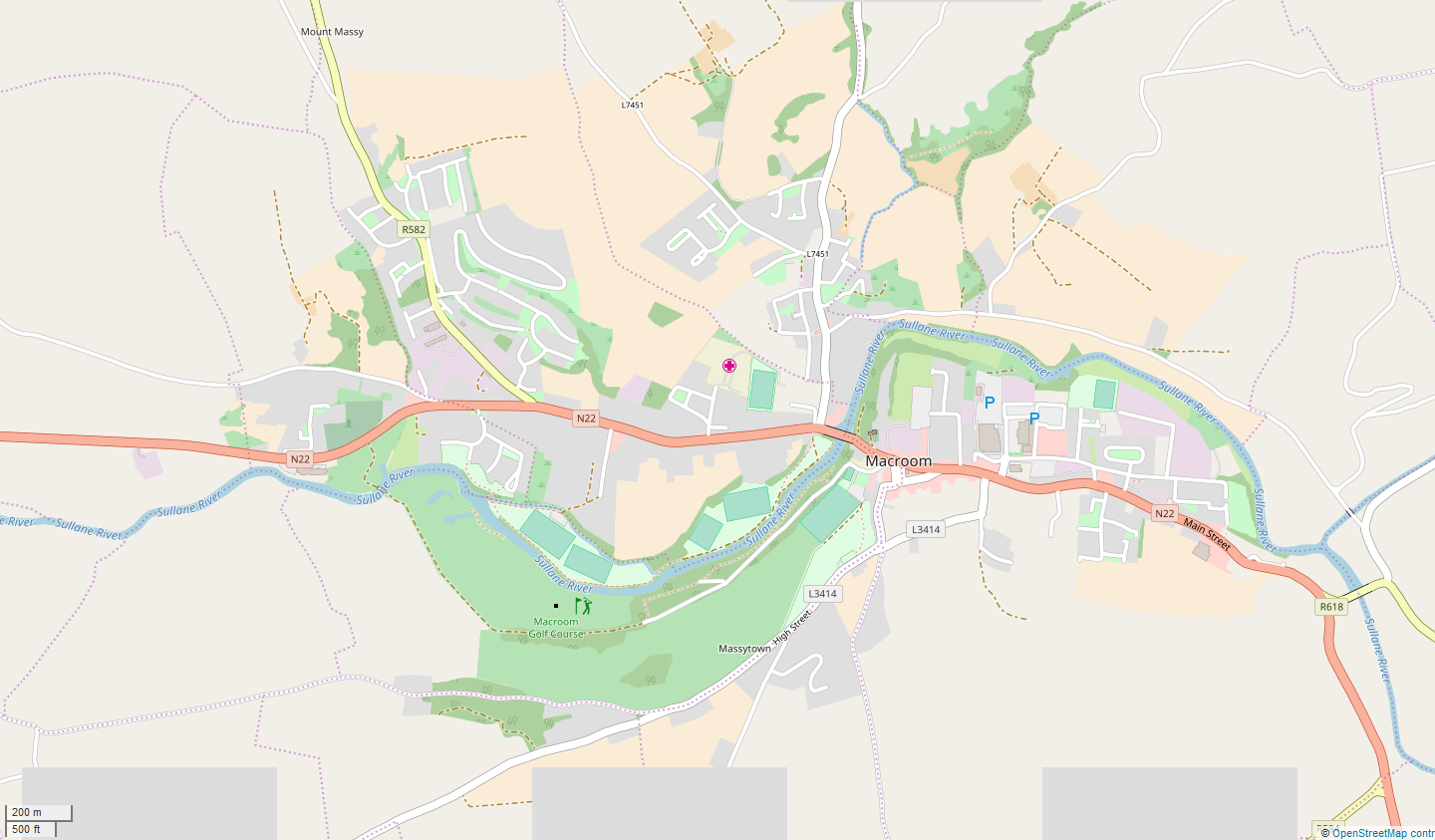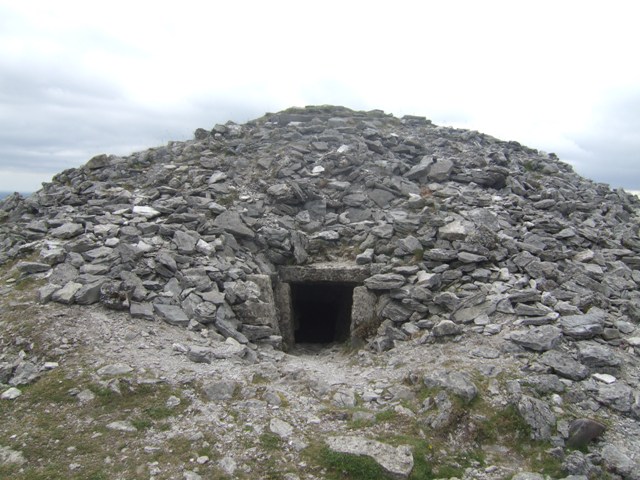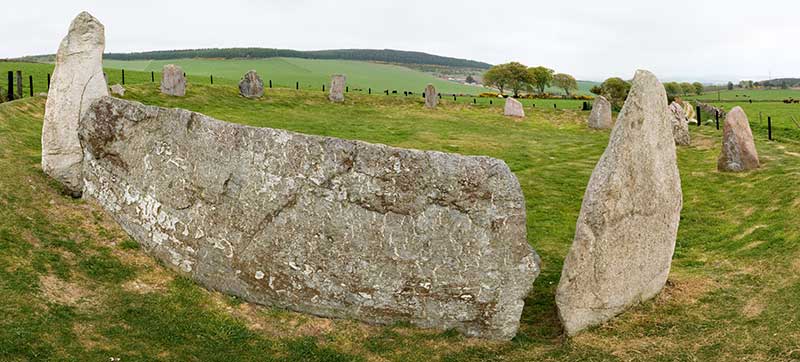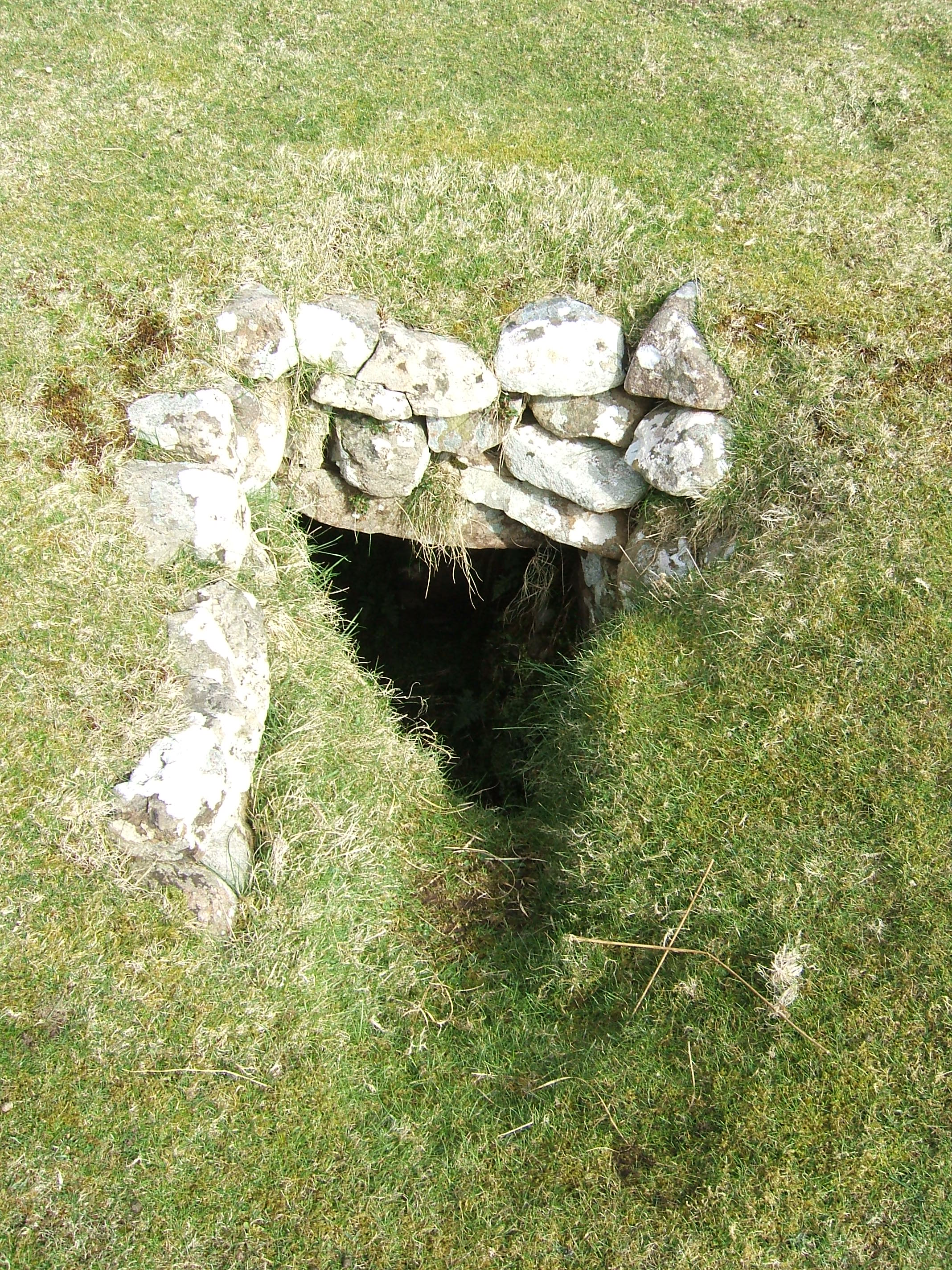|
Knocknakilla
Knocknakilla is the site of a megalithic complex () situated between Macroom and Millstreet, in County Cork, Ireland. It is set in blanket peatland on the north-west upper slopes of Musherabeg mountain and is thought to be 3500 years old. Environment The mid-Cork area is rich in archaeological artifacts, and the surrounding townlands contain two cashels, a ringfort, two fulacht fiadh, a possible souterrain and a circular enclosure. The word Knocknakilla is derived from the Irish ''Cnoc na Cille'', as 'The Hill of the Church'. Description The site is located is on a level patch of bogland overlooking a deep valley and comprises a recumbent stone circle, a radial cairn and two pointy portal stones (one of which has fallen), aligned north-northeast to south-southwest. The stone circle is made up of five 1.3- to 1.5-metre-high stones, of which two (the axis and east sidestone) fell sometime in the last 50 years.Power (1997) Three meters away is a 10-stone, 3.5-metre-diameter, r ... [...More Info...] [...Related Items...] OR: [Wikipedia] [Google] [Baidu] |
Macroom
Macroom (; ) is a market town in County Cork, Ireland, located in the valley of the River Sullane, halfway between Cork (city), Cork city and Killarney. Its population has grown and receded over the centuries as it went through periods of war, famine and workhouses, forced emigration and intermittent prosperity. The 2011 census of Ireland, 2011 census gave an urban population of 3,879 people, while the 2016 census of Ireland, 2016 census recorded 3,765 people. The town is in a Civil parishes in Ireland, civil parish of the same name. Macroom began as a meeting place for the druids of Munster. It is first mentioned is in 6th-century records, and the immediate area hosted a major battle involving the Irish king Brian Boru. During the Middle Ages, the town was invaded by a succession of warring clans, including the Murcheatach Uí Briain and Richard de Cogan families. In the early modern period the MacCarthys took control and later the area found prosperity via milling. The MacCa ... [...More Info...] [...Related Items...] OR: [Wikipedia] [Google] [Baidu] |
Portal Stones
This article describes several characteristic architectural elements typical of European megalithic (Stone Age) structures. Forecourt In archaeology, a forecourt is the name given to the area in front of certain types of chamber tomb. Forecourts were probably the venue for ritual practices connected with the burial and commemoration of the dead in the past societies that built these types of tombs. In European megalithic architecture, forecourts are curved in plan with the entrance to the tomb at the apex of the open semicircle enclosure that the forecourt creates. The sides were built up by either large upright stones or walls of smaller stones laid atop one another. Some also had paved floors and some had blocking stones erected in front of them to seal the tomb such as at West Kennet Long Barrow. Their shape, which suggests an attempt to focus attention on the tomb itself may mean that they were used ceremonially as a kind of open air auditorium during ceremonies. Excavation ... [...More Info...] [...Related Items...] OR: [Wikipedia] [Google] [Baidu] |
Megalithic
A megalith is a large Rock (geology), stone that has been used to construct a prehistoric structure or monument, either alone or together with other stones. More than 35,000 megalithic structures have been identified across Europe, ranging geographically from Sweden in the north to the Mediterranean Sea in the south. The word was first used in 1849 by the British antiquarian Algernon Herbert in reference to Stonehenge and derives from the Ancient Greek words "wikt:μέγας, mega" for great and "wikt:λίθος, lithos" for stone. Most extant megaliths were erected between the Neolithic period (although earlier Mesolithic examples are known) through the Chalcolithic, Chalcolithic period and into the Bronze Age. Types and definitions While "megalith" is often used to describe a single piece of stone, it also can be used to denote one or more rocks hewn in definite shapes for special purposes. It has been used to describe structures built by people from many parts of the wo ... [...More Info...] [...Related Items...] OR: [Wikipedia] [Google] [Baidu] |
Megalithic Monuments In Ireland
A megalith is a large stone that has been used to construct a prehistoric structure or monument, either alone or together with other stones. More than 35,000 megalithic structures have been identified across Europe, ranging geographically from Sweden in the north to the Mediterranean Sea in the south. The word was first used in 1849 by the British antiquarian Algernon Herbert in reference to Stonehenge and derives from the Ancient Greek words " mega" for great and " lithos" for stone. Most extant megaliths were erected between the Neolithic period (although earlier Mesolithic examples are known) through the Chalcolithic period and into the Bronze Age. Types and definitions While "megalith" is often used to describe a single piece of stone, it also can be used to denote one or more rocks hewn in definite shapes for special purposes. It has been used to describe structures built by people from many parts of the world living in many different periods. The most widely known m ... [...More Info...] [...Related Items...] OR: [Wikipedia] [Google] [Baidu] |
Wedge Tomb
A gallery grave is a form of megalithic tomb built primarily during the Neolithic Age in Europe in which the main gallery of the tomb is entered without first passing through an antechamber or hallway. There are at least four major types of gallery grave (complex, transepted, segmented, and wedge-shaped), and they may be covered with an earthen mound (or "tumulus") or rock mound (or "cairn"). Background Archeologist T. Douglas Price argues that the gallery grave was a form of community burial site. Those placed in a gallery grave were most likely members of the same family or hamlet, and probably were intended to reinforce the sense of community. Gallery graves may be straight, or they may form an ell. In some cases, a burial chamber exists at the end of the gallery. The walls of gallery graves were built of orthostats, slab-like stones set upright in the earth. They were roofed with multiple flat stones, although the burial chamber (if one existed) was usually roofed with a ... [...More Info...] [...Related Items...] OR: [Wikipedia] [Google] [Baidu] |
Coillte Teoranta
Coillte (; ; meaning /) is a state-owned commercial forestry business in Ireland based in Newtownmountkennedy. Coillte manage approximately 7% of the country’s land, and operates three businesses - their core forestry business, a 'land solutions' division, and a wood panel manufacturing business called 'Medite Smartply'. Operation The company was incorporated in December 1988 and commenced trading in January 1989 when it took over the forestry activities previously carried out by the Department of Agriculture, Food and the Marine. Shares are held by the Minister for Agriculture, Food and the Marine and Minister for Finance on behalf of the Irish Government. During 2016, the organisation had an average of 862 employees. The Coillte estate is 4,450 square kilometres of which 79% is forest; it manages over 50% of forested land in the country. In its 27 years of operation between 1989 and 2016, Coillte had: *Grown its forest and land estate from 396,000 hectares to over 440,00 ... [...More Info...] [...Related Items...] OR: [Wikipedia] [Google] [Baidu] |
Cairn
A cairn is a human-made pile (or stack) of stones raised for a purpose, usually as a marker or as a burial mound. The word ''cairn'' comes from the (plural ). Cairns have been and are used for a broad variety of purposes. In prehistory, they were raised as markers, as memorials and as burial monuments (some of which Chambered cairn, contained chambers). In the modern era, cairns are often raised as landmarks, especially to mark the summits of mountains, and as Trail blazing, trail markers. They vary in size from small piles of stones to entire artificial hills, and in complexity from loose conical rock piles to elaborate megalithic structures. Cairns may be painted or otherwise decorated, whether for increased visibility or for religious reasons. History Europe The building of cairns for various purposes goes back into prehistory in Eurasia, ranging in size from small rock sculptures to substantial human-made hills of stone (some built on top of larger, natural hills). ... [...More Info...] [...Related Items...] OR: [Wikipedia] [Google] [Baidu] |
Stone Circle
A stone circle is a ring of megalithic standing stones. Most are found in Northwestern Europe – especially Stone circles in the British Isles and Brittany – and typically date from the Late Neolithic and Early Bronze Age, with most being built between 3300 and 2500 BC. The best known examples include those at the henge monument at Avebury, the Rollright Stones, Castlerigg, and elements within the ring of standing stones at Stonehenge. Scattered examples exist from other parts of Europe. Later, during the Iron Age, stone circles were built in southern Scandinavia. The archetypical stone circle is an uncluttered enclosure, large enough to congregate inside, and composed of megalithic stones. Often similar structures are named 'stone circle', but these names are either historic, or incorrect. Examples of commonly misinterpreted stone circles are ring cairns, burial mounds, and kerb cairns. Although it is often assumed there are thousands of stone circles across the Br ... [...More Info...] [...Related Items...] OR: [Wikipedia] [Google] [Baidu] |
Irish Language
Irish (Standard Irish: ), also known as Irish Gaelic or simply Gaelic ( ), is a Celtic language of the Indo-European language family. It is a member of the Goidelic languages of the Insular Celtic sub branch of the family and is indigenous language, indigenous to the island of Ireland. It was the majority of the population's first language until the 19th century, when English (language), English gradually became dominant, particularly in the last decades of the century, in what is sometimes characterised as a result of linguistic imperialism. Today, Irish is still commonly spoken as a first language in Ireland's Gaeltacht regions, in which 2% of Ireland's population lived in 2022. The total number of people (aged 3 and over) in Ireland who declared they could speak Irish in April 2022 was 1,873,997, representing 40% of respondents, but of these, 472,887 said they never spoke it and a further 551,993 said they only spoke it within the education system. Linguistic analyses o ... [...More Info...] [...Related Items...] OR: [Wikipedia] [Google] [Baidu] |
Souterrain
''Souterrain'' (from French ', meaning "subterrain", is a name given by archaeologists to a type of underground structure associated mainly with the European Atlantic Iron Age. These structures appear to have been brought northwards from Gaul during the late Iron Age. Regional names include earth houses, fogous and Pict PICT is a graphics file format introduced on the original Apple Macintosh computer as its standard metafile format. It allows the interchange of graphics (both bitmapped and vector), and some limited text support, between Mac applications, an ...ish houses. The term ''souterrain'' has been used as a distinct term from ''fogou'' meaning 'cave'. In Cornwall the regional name of ''fogou'' (Cornish language, Cornish for 'cave') is applied to souterrain structures. The design of underground structures has been shown to differ among regions; for example, in western Cornwall the design and function of the fogou appears to correlate with a larder use. Etymology T ... [...More Info...] [...Related Items...] OR: [Wikipedia] [Google] [Baidu] |
Fulacht Fiadh
A burnt mound is an archaeological feature consisting of a mound of shattered stones and charcoal, normally with an adjacent hearth and trough. The trough could be rock-cut, wood-lined or clay-lined to ensure it was watertight. Radiocarbon dates vary quite widely, the earliest being Late Neolithic, with clusters of dates between 1900 and 1500 BC and 1200–800 BC, with some outliers in the Iron Age. There are also some dates that go into the Early Middle Ages. The technology used at burnt mounds has much greater antiquity and is found from the Palaeolithic onward. Description and creation The shattered rock fragments are thought to be the remains of stones heated in fires, which were used to heat water. The shattering of the rock appears to have been the result of thermal shock when the heated stones were dropped into liquid, normally believed to be water. The mound is assumed to result from the periodic clearing out of the trough, with the stone fragments and charco ... [...More Info...] [...Related Items...] OR: [Wikipedia] [Google] [Baidu] |
Ringfort
Ringforts or ring forts are small circular fortification, fortified settlements built during the Bronze Age, Iron Age and early Middle Ages up to about the year 1000 AD. They are found in Northern Europe, especially in Ireland. There are also many in South Wales and in Cornwall, where they are called rounds. Ringforts come in many sizes and may be made of stone or earth. Earthen ringforts would have been marked by a circular rampart (a bank and ditch), often with a palisade, stakewall. Both stone and earthen ringforts would generally have had at least one building inside. Distribution Ireland In Irish language sources they are known by a number of names: ' (anglicised ''rath'', also Welsh ), ' (anglicised ''lis''; cognate with Cornish language, Cornish '), ' (anglicised ''cashel''), ' (anglicised ''caher'' or ''cahir''; cognate with Welsh language, Welsh ', Cornish and Breton language, Breton ') and ' (anglicised ''dun'' or ''doon''; cognate with Welsh and Cornish ') ... [...More Info...] [...Related Items...] OR: [Wikipedia] [Google] [Baidu] |










